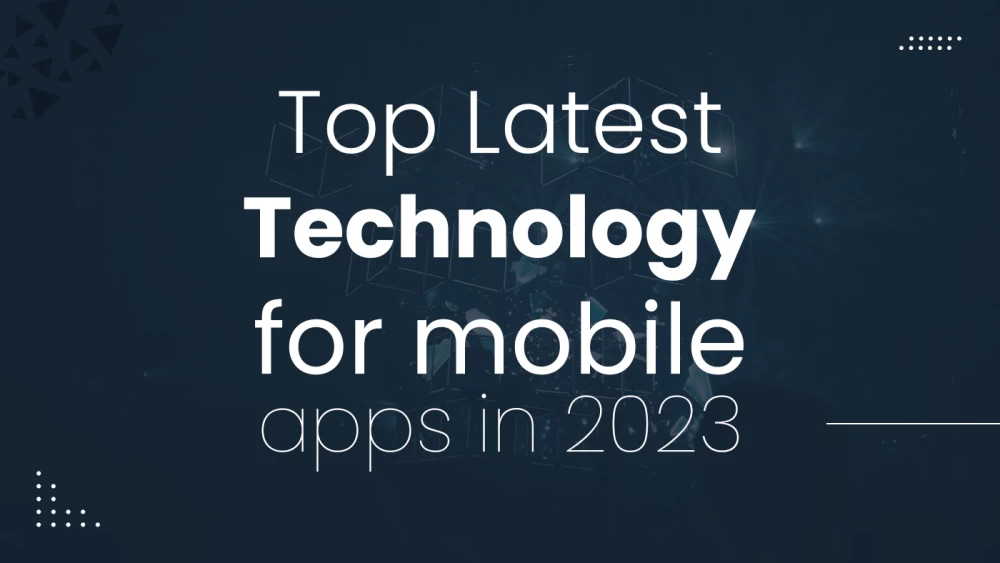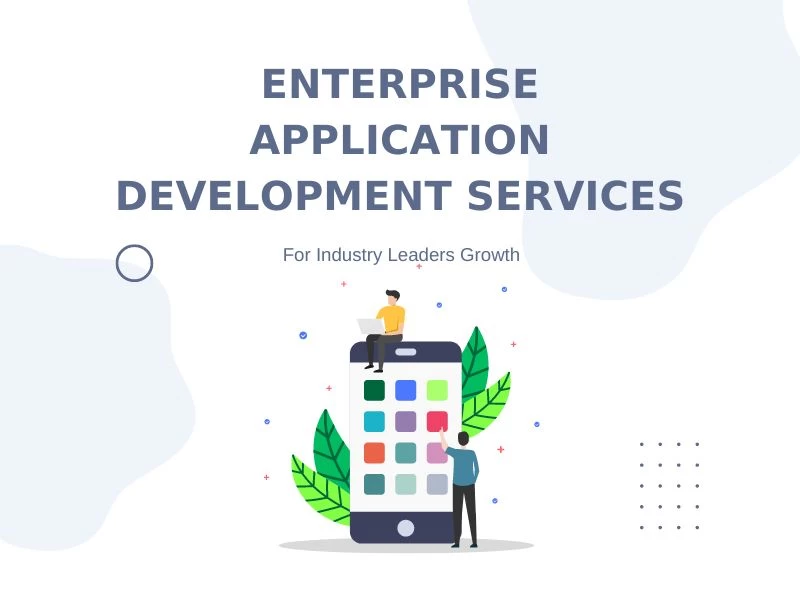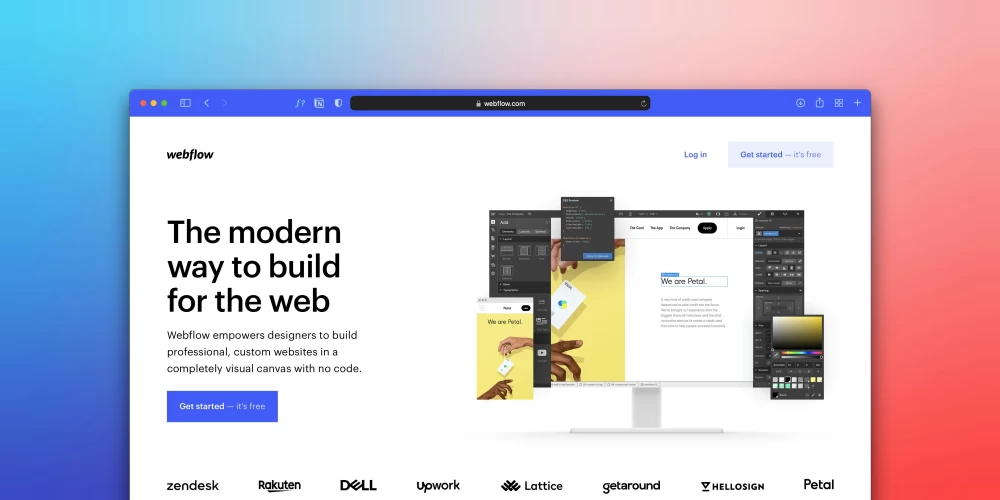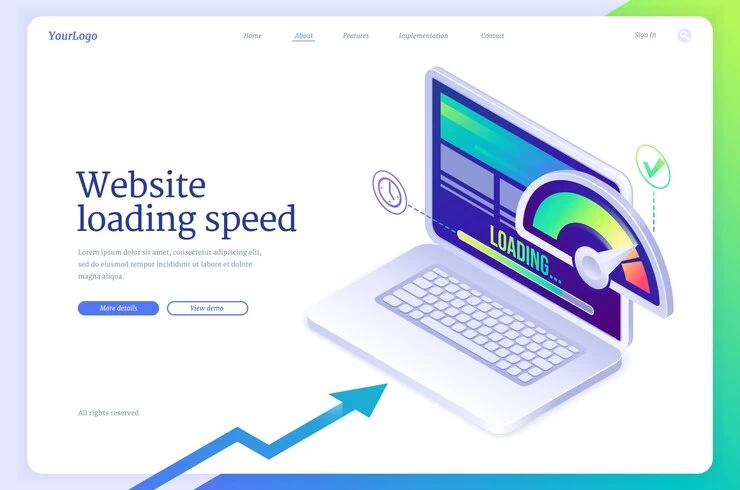Table of Contents
Your business's digital presence is crucial for growth. Mobile apps are an integral part of our everyday lives. Mobile apps are essential for everything: booking a flight, ordering food online, booking a taxi, and so on. Amazing new apps are coming out in 2022 that are needed to meet our needs. Technology has made everything possible. Business owners often wonder which technology is best to create a mobile app development UK. There are several options for selecting the right technology for your mobile app. This article will cover 5 top technologies for creating unique mobile apps in 2022. How to Select the Appropriate Technology for your App Development: Many factors influence a company's decision on which technologies to use to develop mobile apps. It is imperative to consider a range of industry standards when choosing the technology to use. Mobile App Development UK Services can help you choose the right technology for your app development project. They will help you select the right technology to create stunning mobile apps.
Top 5 Technologies for Mobile App Development:
1. Swift:
Apple's Swift programming language is an open-source, general-purpose programming language. It is an excellent language for iOS development. Let's talk in detail about Swift programming language. It is a compiled programming language that can be used for creating apps for iOS, macOS, and watchOS. Swift is simpler to learn than Objective-C and has a lower barrier to entry. Swift is quickly becoming the preferred programming language for Apple Platforms (iOS and iPadOS), macOS, and tvOS. It's compatible with Linux and servers. Swift has made a lot of progress since its launch at WWDC 2014. The developer community that supports it is still growing.
Swift Key Features:
Open-source: Swift's creators understood that everyone must access the technology to create a defining programming language. Swift's seven-year existence has seen it build a large support community and offer many third-party tools. Secure and safe: Swift's syntax allows you to write consistent and clean code. Swift provides safeguards to avoid errors and improve readability. Swift is fast and efficient: Swift was designed with speed and performance as its primary focus. Swift can run up to 2.6x faster than that Objective-C and 8.4x faster than Python. According to apple.com, Swift is up 2.6x faster than Objective-C and 8.4x faster than that Python. Swift's Simple Syntax: Swift is a simple syntax that is easy to understand and reflects developers' needs. Swift's syntax features allow you to create more expressive code. Swift uses objective-C features like null-ability, generic and generic to make the code more readable and safer. Because it reduces the code needed, programming is easy. Multiplatform Support: Swift has multiplatform compatibility. It works on iOS, macOS, and watchOS. The software can be developed that runs on any operating system. It will run on any platform or device.
2. React Native:
React Native, a JavaScript framework, allows you to create natively rendered mobile apps on iOS and Android. It is built on React, Facebook's JavaScript library that allows you to create user interfaces. React JS (for the web) and React Native for mobile apps are built with JSX. This is a combination of JavaScript and XML-like markup. The React Native "bridge" then calls native rendering APIs in Objective-C for iOS or Java for Android. Your app will appear and feel like any other mobile app because it is rendered with genuine mobile UI components instead of web views.
React Native Key Features:
Write code once and use it everywhere: React Native code is the most popular feature. It works on almost every mobile device, i.e., iOS, Android, and Windows. No need to create different codes for different mobile operating systems like Swift for iOS, Java, and Android or C# for Windows. React Native apps are native. This means that they can run on different platforms using the same code. UI-focused: React Native, one of the most widely used frameworks, creates a hierarchy of UI elements from which JavaScript code can be generated. React Native saves time by implementing a new way to develop native apps. It's incredibly responsive and has exceptional rendering capabilities. Hot Reload: React Native's hot reload feature lets users quickly reload the program when their code or native script changes. This allows them to display the latest UI Content. The user doesn't have to wait for updates as changes are immediately reflected. Speed: Hybrid apps are quicker than native apps compared to hybridapp development UK. Hot reload makes it unnecessary to reload app data each time. React Native is a great tool to speed up your development. Third-Party Libraries Support: A third-party library provides native app functionality unavailable in React Native. We can see in the documentation that React Native doesn't have maps.
3. Flutter:
Google's Flutter UI framework allows you to create apps for different platforms. With a single codebase, developers can create apps for iOS and Android. It is available in C++, Dart, and C++ and can create stunning natively compiled apps. Flutter is created using Dart's programming language. Google developed Dart in 2011 for client-side development. Flutter is loved and ranked 2nd in the most used frameworks.
Flutter Key Features:
Hot Reload is a prominent feature of Flutter. Hot Reload allows you to view any changes made by developers immediately. Developers will find this feature helpful as they can see the changes made to the app. Because the changes can be seen within seconds, developers can quickly fix bugs. The team may also experiment with new features and make improvements. This feature gives developers and designers unlimited creative freedom, which enhances their creativity. Minimum Code: Flutter is created using the Dart programming language. Dart is a programming language that uses AOT and JIT compiling to improve the performance of applications. JIT makes it easier to develop with the hot-reload feature. It refreshes your user interface without the need to build a new one. Great Widget Library Dart2.2: Flutter applications are written in Dart (a computer language). Google released Dart 2.0 before Dart 2.2 was released. The new function has been a great help to developers. Dart 2.2 has made the AOT compiled code more efficient. This library can also create collection classes for listing, sets, and map modeling. Native ARM code: This native ARM (Advanced RISC Machines Code) benefits tech companies. It allows specialists to create software that is easy to use and profitable for the company.
4. Kotlin:
Kotlin, an open-source statically typed programming language that can be used on the Java virtual machine (JVM), is available. JetBrains introduced it in 2016, and the first stable release was released in 2016. Let's discuss this in detail: Kotlin, a Java Virtual Machine programming language (JVM), can be used wherever Java is used (almost anywhere). This includes development for the client, server, web, and Android platforms. The JetBrains team works on Kotlin for embedded devices and iOS, making it possible to be a one-stop shop in all areas of application development.
The Key Features of Kotlin:
Concise code: Developers prefer simple and clean code. It takes less time to create, read, and maintain minimal code than Java. It has a lot less boilerplate code. You will therefore write much less code in Kotlin than in Java. This will help you speed up your development. Extension Feature - The extension feature lets you add additional attributes to an existing component. This makes it easy to add unique features. This feature is excellent for both appending strings and calculations. Let's say you want to add more features to a class. What would you do? In most programming languages, you would create a new class. However, with Kotlin, this is not true. You can use the extension feature to create new classes. Interoperability:Kotlin can be a fully interoperable programming language. The coexistence of these two languages makes developers' lives easier and more productive. The interoperability feature allows you to create one project in both languages quickly. This allows you to modify the programming language without altering the code. Reduces runtime crashes: This feature is the most advanced and allows you to identify the Null-pointer exception while developing your project. It helps reduce the number of crash runs. Collection Filtering. We all know that working with APIs involves dealing with collections. You can easily see what the resultant list should look like using Kotlin's collection filtering feature.
5. Java:
It is an object-oriented programming language used in distributed web environments. Although it is complex, it is easy to understand and read. It allows developers to "write once and run anywhere," meaning that Java code compiled on it will run on any Java-compatible platform without recompilation.
Key Features in Java:
Object-Oriented is a programming language focusing exclusively on object-oriented programming (OOP). Java enables almost all aspects of Object-Oriented Programming, including Abstraction, Inheritance, and Encapsulation. All data and applications are contained in objects and classes. Robust: Robust is an acronym for "strong." Java programs can automatically handle Runtime errors, automatic garbage collection, and exception handling. These factors all contribute to the language's robustness. Distributed: Java supports TCP/IP protocols and UDP protocols. Java can be used to create programs that collect data and distribute it across a network of computers. Remote Method Invocation (RMI) is a Java feature that allows programs to share methods across a network. Multi-threaded: A thread is a separate program running in the background. We can create Java applications that perform multiple tasks simultaneously by defining many threads. Multi-threading has the fundamental advantage that each thread doesn't eat memory. Each thread has its own memory space. Multimedia, Web applications, and other applications require threads. Dynamic: Java is more dynamic than C++ and C++. It is flexible and can adapt to its environment. It allows developers to dynamically link new class libraries, methods, and objects. Java programs can store lots of information at runtime, which can be used to resolve object accesses.
Conclusion: Future of mobile apps:
There are many technologies available, each with its benefits and drawbacks. The best technology for developing extraordinary mobile apps depends on the requirements of your project. This article should have given you a solid overview of today's most popular technologies. Are your unsure which technology is best for your mobile app development project? O2SOFT has helped many companies with their mobileapp development UKprojects. This allows for seamless user experiences. All the skills required to create fully-featured, robust, and scalable mobile applications, including Swift, React Native, and Kotlin.


















